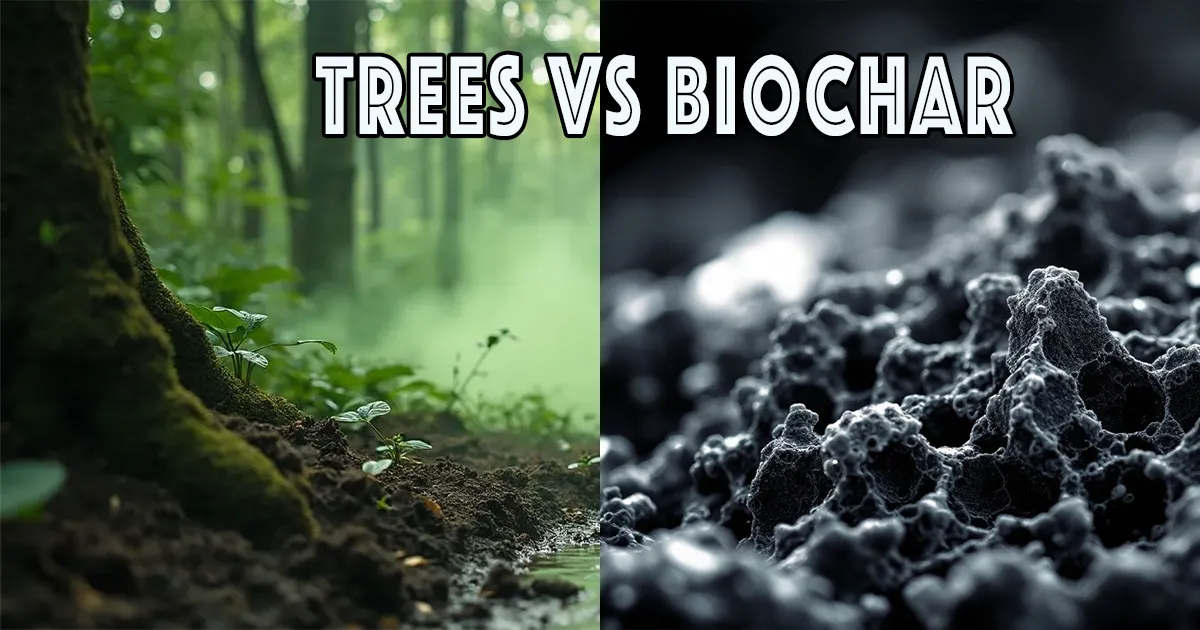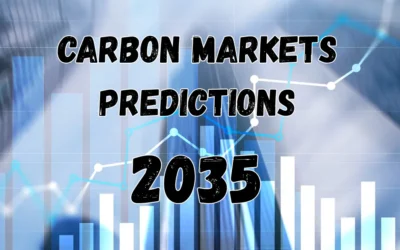As the carbon market continues to evolve, transparency and trust are critical for long-term growth and credibility. Recent SEC regulations have introduced stringent climate disclosure rules for publicly traded companies, requiring them to reveal their greenhouse gas emissions and use of carbon credits. This regulatory development seeks to improve corporate accountability and address “greenwashing” concerns. At the same time, forest-based carbon offset projects, such as those in Oregon’s Elliott State Forest and Brazil’s Amazon, highlight both the potential and the inherent risks of tree-based offsets.
While tree-based offsets contribute to carbon markets, they come with vulnerabilities that can impact the reliability of carbon credits. In contrast, alternative approaches—such as Dynamic Carbon Credits using biochar—offer more stable and reliable carbon sequestration methods, meeting the additionality requirements essential for credible carbon offsets.
How the SEC’s Climate Disclosure Rules Influence Carbon Market Credibility
The SEC’s recently approved climate disclosure rules represent a significant step toward greater transparency within the U.S. carbon market. Under these new regulations, publicly traded companies must disclose their direct emissions (Scope 1 and 2) as well as the financial details associated with their use of carbon offsets. This mandatory reporting not only provides a clearer view of a company’s climate impact but also encourages corporations to select high-quality, verifiable carbon credits.
The enhanced transparency requirements may also lead more companies to explore alternative carbon credit solutions beyond forest-based projects, as they seek reliable, long-term investments to meet their sustainability goals. This shift could help improve the integrity of the voluntary carbon market, where trust and additionality are paramount for carbon offset success.
Examining the Risks of Tree-Based Offsets in Oregon and Brazil
Tree-based carbon offset projects are among the most common types of carbon sequestration initiatives within the carbon market. However, recent developments in Oregon and Brazil reveal that these projects are susceptible to significant risks:
- Oregon’s Elliott State Forest Project:
In Oregon, the State Land Board recently approved a plan to manage the Elliott State Forest as a carbon reserve to offset greenhouse gas emissions. The forest will allow limited logging while focusing on conservation and carbon sequestration. However, tree-based projects like this are vulnerable to wildfires, disease, and climate change impacts, which can release stored carbon back into the atmosphere, effectively negating any carbon savings. - Carbon Credit Challenges in Brazil’s Amazon:
In the Amazon, the state of Pará has signed a high-profile carbon credit agreement, positioning it as one of the largest forest-based carbon offset projects globally. Despite its size, the project faces challenges related to illegal logging, wildfires, and fraudulent activities that undermine its credibility. Fraudulent practices, such as falsely claiming public lands as private carbon reserves, threaten the integrity of carbon credits sold from these projects. These challenges underscore the need for rigorous monitoring and verification within the carbon market.
Dynamic Carbon Credits: A More Resilient Solution for the Carbon Market
While forest-based carbon offsets play a role in the carbon market, alternative methods like biochar provide a more resilient and stable approach to carbon sequestration. Biochar, created from plant material, locks carbon in a stable form that can be buried in soil, where it remains for centuries. Here’s how biochar and other Dynamic Carbon Credits address some of the primary concerns with tree-based offsets:
- Permanence and Stability: Unlike tree-based carbon credits that risk carbon release due to fires or disease, biochar is a long-lasting carbon sink. It doesn’t decay or burn under typical conditions, which means it provides a secure form of carbon storage.
- Additionality and Local Implementation: Biochar projects can be implemented near emissions sources, reducing carbon footprints and ensuring that the carbon captured would not have been sequestered otherwise. This local, decentralized approach avoids land-use conflicts often associated with large-scale tree-based projects.
- Economic and Environmental Benefits: Biochar production not only sequesters carbon but also improves soil health and water retention. These additional benefits make it a versatile tool in climate adaptation strategies, adding real, measurable value beyond carbon offsetting.
- Real Methane Reductions: Our process for reducing methane emissions is fundamentally different from tree-based carbon projects because it focuses on preventing methane formation at the source and sequestering carbon through more stable and controlled methods, like biochar production, which offers a greater degree of permanence and reliability. Biochar and similar technologies can intercept methane emissions by utilizing organic waste in a controlled environment through pyrolysis (heating biomass without oxygen). This converts the biomass into biochar and prevents it from decomposing anaerobically, which is when methane would typically be emitted. By avoiding methane production entirely, this approach actively prevents one of the most potent greenhouse gases from reaching the atmosphere.
For companies looking to engage in the carbon market, Dynamic Carbon Credits with biochar represent an opportunity to invest in high-quality offsets that deliver verified, long-term benefits. By diversifying carbon sequestration strategies, companies can better ensure that their investments contribute genuinely to their emissions reduction targets.
Final thoughts.
The SEC’s climate disclosure rule, combined with the challenges faced by tree-based carbon offset projects in Oregon and Brazil, highlights the importance of credibility and transparency in the carbon market. As companies navigate these new requirements, investing in carbon credits that offer verifiable additionality and long-term reliability, such as biochar-based credits, can help reduce carbon footprints while enhancing the market’s overall trustworthiness. Through strategic investments in resilient carbon projects, corporations can build a path toward genuine sustainability and climate responsibility.





